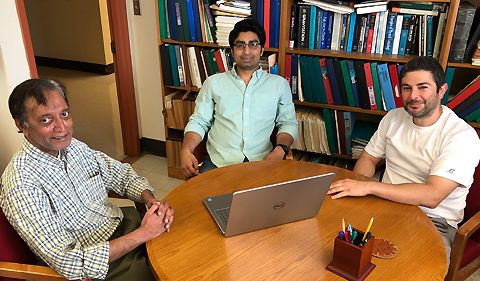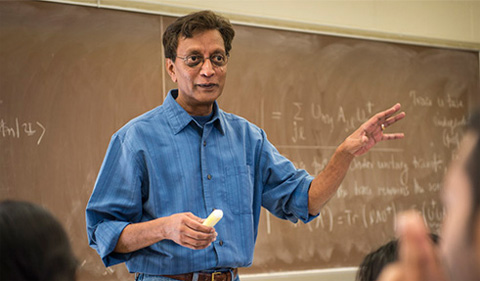A team of Ohio University nuclear physicists has proposed a new theoretical model for calculating pairing properties of atomic nuclei including those found in extreme astrophysical environments. As in some solids in which two interacting electrons pair up to act as one object that leads to superconductivity, interacting neutrons (or protons) in nuclei pair up to cause superfluidity (or superconductivity) in nuclei.
The new model facilitates rapid and efficient calculations to be performed when examining characteristics of highly neutron- or proton-rich exotic nuclei found in supernova explosions and when stars collide, such as in neutron star mergers.
OHIO physics doctoral student Md. Abdullah Al Mamun, postdoctoral researcher Dr. Constantinos Constantinou, and Dr. Madappa Prakash published their research, “Pairing properties from random distributions of single-particle energy levels”, in Physical Review C, a journal of the American Physical Society.
The new “Random Spacing Model” employs energy levels that neutrons and protons can occupy in an individual nucleus randomly around the appropriate energies. Averages over thousands of such easily generated random configurations enable statistically-based bounds to be placed on the thermal properties such as entropy, specific heat, etc., of nuclei. Based on methods appropriate for large number systems, researchers had predicted a sharp phase transition in nuclei, which has not been observed experimentally.
What has been observed instead is a smooth S-shape in the specific heat. Nuclei and nanoparticles inherit large fluctuations in pairing properties owing to their small sizes. The Random Spacing Model with the inclusion of fluctuations reproduces the observed S-shape, which is heartening.
Predictions of the Random Spacing Model enables exploration of the pairing phenomenon in astrophysical sites which harbor exotic nuclei, paving the way to pin down how elements heavier than iron were synthesized in our Universe, a long-standing problem that awaits resolution.
Al Mamun will present findings of this research at the 6th International Workshop on Compound-Nuclear Reactions and Related Topics (CNR*18), Sept. 24-28, at the Lawrence Berkeley National Laboratory in Berkeley, CA.



















Comments